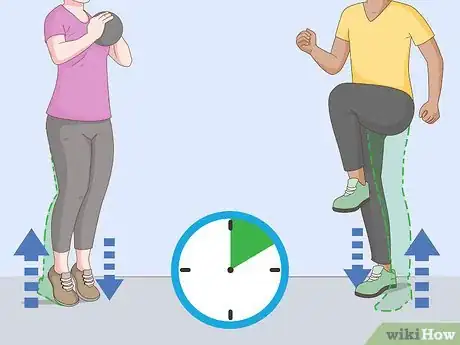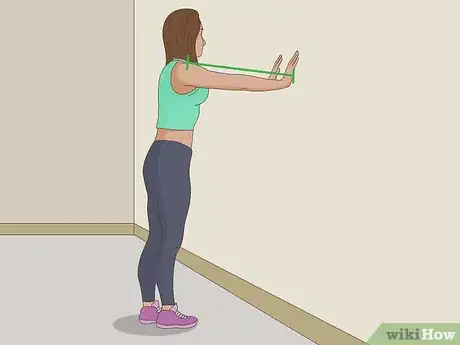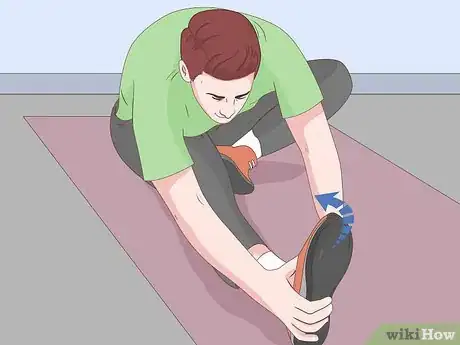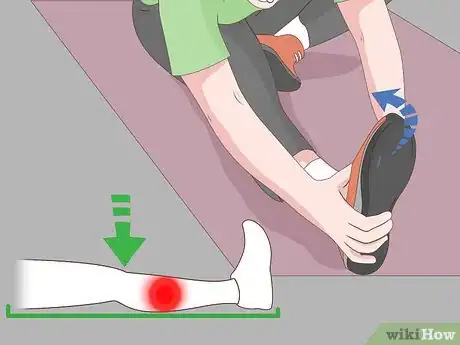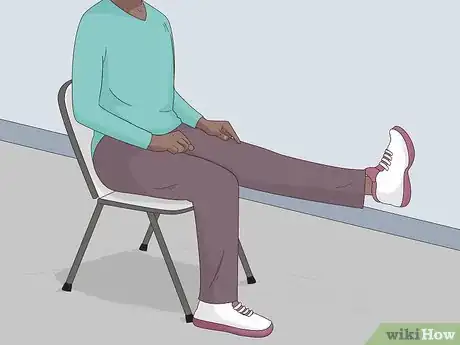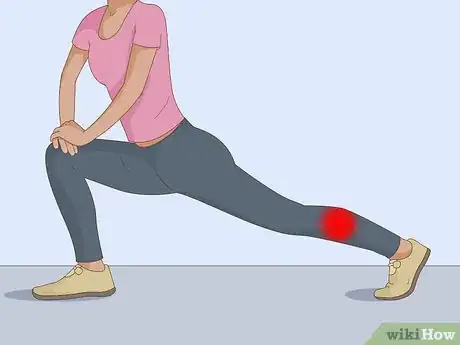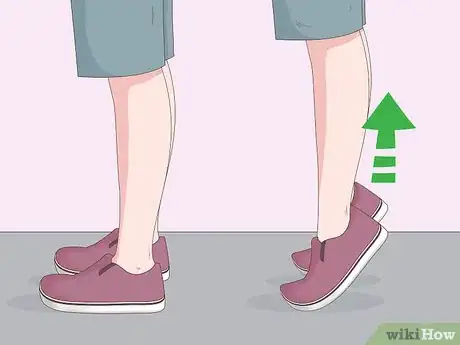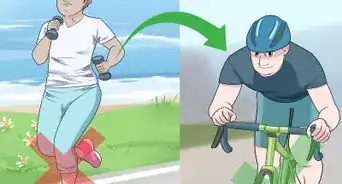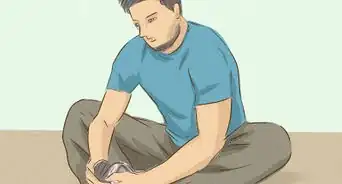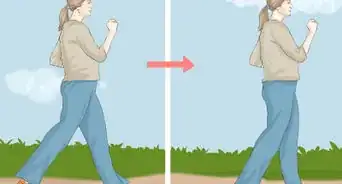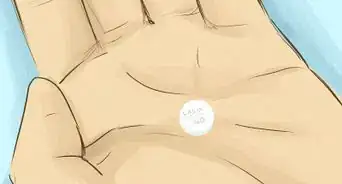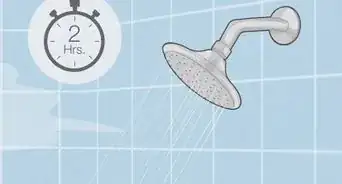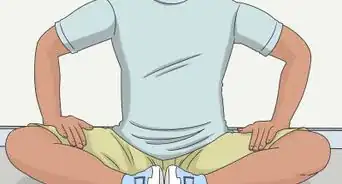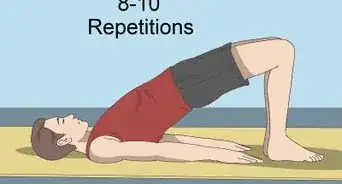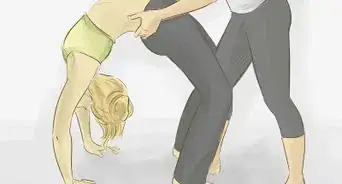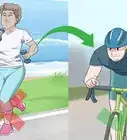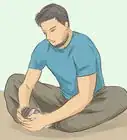This article was co-authored by Julian Arana, M.S.eD., NCSF-CPT. Julian Arana is a Personal Trainer and the Founder of B-Fit Training Studios, a personal training and wellness set of studios based in Miami, Florida. Julian has over 12 years of personal training and coaching experience. He is a certified personal trainer (CPT) by the National Council on Strength and Fitness (NCSF). He has a BS in Exercise Physiology from Florida International University and an MS in Exercise Physiology specializing in strength and conditioning from the University of Miami.
wikiHow marks an article as reader-approved once it receives enough positive feedback. In this case, 100% of readers who voted found the article helpful, earning it our reader-approved status.
This article has been viewed 206,295 times.
If you're about to head out for a run, ball game, or similar activity, don't leave without doing your calf stretches! Stretching your calf muscles is essential to prevent injuries if you're going to be doing just about any vigorous activity. Or, if you have pain in your legs, doing calf stretches can give you some relief. No special equipment is needed, and these quick and easy stretches can make a big difference.
Steps
Stretching from a Standing Position
-
1Warm up first. It is important to warm up your muscles before you begin stretching. This will get the blood flowing to your calf muscles and the Achilles tendon, which can be difficult to stretch. You can warm up by marching in place, doing some calf raises, or doing jumping jacks for about 5 to 10 minutes.
-
2Stand facing a wall. Your arms should be outstretched, touching the wall. Hold them at about shoulder height. At the same time, your head should be up and your back straight.
- If you don’t have a wall to stand at, just bring one leg forward, bend at the knee, and continue.
Advertisement -
3Take a big step backwards. Work one leg at a time. Step backwards far enough that you can feel your calf tighten a little in your back leg. At the same time, you should be able to keep your heel flat on the floor.
-
4Bend your other knee. Flex your front knee at about a ninety degree angle. Continue to keep your back straight and the heel of your outstretched back leg flat on the floor.
- You should feel the stretch in your back leg when you are in this position.
-
5Hold the position. You should now be able to feel your calf stretching. Remain in the stretched position for thirty seconds. Don’t forget to breathe naturally while you hold the position!
- Return to the starting position, and repeat with the other leg.
-
6Intensify the stretch, if you want. If you feel like the basic form of the standing calf stretch isn’t pushing you enough, try stepping a little further back. Just make sure that you are able to keep your heel flat on the floor, and that you aren’t stretching to the point of pain.
Doing Seated Stretches
-
1Sit on the ground with your legs outstretched. Get into a comfortable position on the ground. Extend the leg you want to stretch out in front of you. Bend the knee slightly upward.[1]
- Keep your other leg out in front, or pulled up closer to you—whatever’s most comfortable.
-
2Pull on the ball of your foot. Reach forward with both of your hands and lightly grasp your foot just below your toes. Gently pull back on your foot so that you have to flex it as much as you can toward your body.[2]
- Your toes should point back toward your body, but don't pull so much that it hurts.
- You can also use an exercise band or towel wrapped around the ball of your foot instead of your hands.
-
3Hold the position. You should feel your calf stretching, but it should not be painful. Hold the position for twenty seconds, making sure to breathe while you do the stretch.[3]
- Return to the original position when you’re done, and repeat with the other leg.
- Repeat two or three times for each leg.
-
4Try an isometric variation. Isometric exercises are based on resisting forces. To do an isometric calf stretch, start in the same position as a normal seated calf stretch. When you pull back on the ball of your foot, use your calf muscles to try and straighten your leg, but don’t actually move it.
- The force of your hands should be enough to keep your leg from straightening.
- Don’t push or pull so hard that it hurts.
Stretching for Special Purposes
-
1Do a simple calf stretch for arthritis. If arthritis is causing pain in your legs, you can try an alternative calf stretch for some relief. Stand up straight while holding onto a chair. Place your left foot back while still keeping your heel on the floor. Bend your right knee, and lean toward the chair.[4]
- You should feel a slight stretch. Hold the position for a few seconds, then repeat on the other side.
-
2Get rid of a calf cramp by stretching. Painful cramps in your legs can sometimes be eliminated by stretching. Stand with the cramped leg behind you and step forward with the other foot. Then, bend your front knee slightly while keeping the back leg straight with your foot flat on the floor. Hold the stretch for a few seconds, then release.[5]
- Repeat on the opposite side if needed.
-
3Incorporate calf stretches into your yoga routine. If you practice yoga, it’s easy to stretch your calves. Many standard poses, like downward dog and pyramid pose, already work your calves. If you want to improve flexibility or strength in your calves, just try some of these poses.[6]
-
4Ask a professional about doing calf stretches and exercises after injury. If you are going through rehab for an injury affecting your calves, standing or seated stretches and exercises can often be very helpful. However, you should ask a physical therapist or trainer for advice on the best (and safest) stretches and exercises to use in your case, just to be sure. They may recommend that you try a heel raise, which is an exercise for your calf muscles. It is not a stretch. To do a heel raise:[7]
- Hold onto the back of a chair.
- Raise yourself up on your toes.
- Hold the position for five seconds.
- Lower your feet back down (without holding onto the chair, if you can).
Expert Q&A
-
QuestionHow do you stretch safely?
 Julian Arana, M.S.eD., NCSF-CPTJulian Arana is a Personal Trainer and the Founder of B-Fit Training Studios, a personal training and wellness set of studios based in Miami, Florida. Julian has over 12 years of personal training and coaching experience. He is a certified personal trainer (CPT) by the National Council on Strength and Fitness (NCSF). He has a BS in Exercise Physiology from Florida International University and an MS in Exercise Physiology specializing in strength and conditioning from the University of Miami.
Julian Arana, M.S.eD., NCSF-CPTJulian Arana is a Personal Trainer and the Founder of B-Fit Training Studios, a personal training and wellness set of studios based in Miami, Florida. Julian has over 12 years of personal training and coaching experience. He is a certified personal trainer (CPT) by the National Council on Strength and Fitness (NCSF). He has a BS in Exercise Physiology from Florida International University and an MS in Exercise Physiology specializing in strength and conditioning from the University of Miami.
Certified Personal Trainer You need to stretch frequently and you should only stretch to the point of mild discomfort. Stretching should never hurt, and if it does, then you need to ease up on the stretch. In general, stretching takes time and persistence.
You need to stretch frequently and you should only stretch to the point of mild discomfort. Stretching should never hurt, and if it does, then you need to ease up on the stretch. In general, stretching takes time and persistence. -
QuestionHow do I fix tight calves and make them stronger?
 Julian Arana, M.S.eD., NCSF-CPTJulian Arana is a Personal Trainer and the Founder of B-Fit Training Studios, a personal training and wellness set of studios based in Miami, Florida. Julian has over 12 years of personal training and coaching experience. He is a certified personal trainer (CPT) by the National Council on Strength and Fitness (NCSF). He has a BS in Exercise Physiology from Florida International University and an MS in Exercise Physiology specializing in strength and conditioning from the University of Miami.
Julian Arana, M.S.eD., NCSF-CPTJulian Arana is a Personal Trainer and the Founder of B-Fit Training Studios, a personal training and wellness set of studios based in Miami, Florida. Julian has over 12 years of personal training and coaching experience. He is a certified personal trainer (CPT) by the National Council on Strength and Fitness (NCSF). He has a BS in Exercise Physiology from Florida International University and an MS in Exercise Physiology specializing in strength and conditioning from the University of Miami.
Certified Personal Trainer Stretching or using a foam roller is a great way to soften the muscles up and relax it. In terms of building your calves, the best thing you can do is a standard calf raise. Just stand on the edge of a step with your heel hanging off a little bit and raise yourself up with the balls of your feet. Train the calves at least three times per week and include single leg standing calf raises in your training.
Stretching or using a foam roller is a great way to soften the muscles up and relax it. In terms of building your calves, the best thing you can do is a standard calf raise. Just stand on the edge of a step with your heel hanging off a little bit and raise yourself up with the balls of your feet. Train the calves at least three times per week and include single leg standing calf raises in your training. -
QuestionHow do you loosen tight calf muscles?
 Michele DolanMichele Dolan is a BCRPA certified Personal Trainer in British Columbia. She has been a personal trainer and fitness instructor since 2002.
Michele DolanMichele Dolan is a BCRPA certified Personal Trainer in British Columbia. She has been a personal trainer and fitness instructor since 2002.
Certified Fitness Trainer Calf stretches and massage are the most common techniques used for loosening tight calf muscles. Yoga can help too.
Calf stretches and massage are the most common techniques used for loosening tight calf muscles. Yoga can help too.
References
- ↑ http://www.fitday.com/fitness-articles/fitness/stretching/the-5-most-effective-calf-stretches.html
- ↑ http://www.fitday.com/fitness-articles/fitness/stretching/the-5-most-effective-calf-stretches.html
- ↑ http://www.fitday.com/fitness-articles/fitness/stretching/the-5-most-effective-calf-stretches.html
- ↑ http://www.arthritis.org/living-with-arthritis/exercise/workouts/walking/stretches-for-walking.php
- ↑ http://www.mayoclinic.org/diseases-conditions/muscle-cramp/manage/ptc-20186098
- ↑ https://www.peacefuldumpling.com/5-yoga-stretches-relieve-tight-calves-shins
- ↑ http://www.summitmedicalgroup.com/library/pediatric_health/sma_calf_strain_tear_exercises/
About This Article
Before you stretch your calves, march in place or do jumping jacks for 5-10 minutes to get the blood flowing to your calf muscles. Then, stand facing a wall with your arms stretched out at shoulder height and touching the wall. Next, step backward far enough with your left leg so you can feel the calf tighten a little, and bend your right knee at a 90 degree angle. Make sure to keep the heel of your left foot flat and your back straight while you hold the stretch for 30 seconds. After that, switch legs and repeat the stretch for your right calf. For instructions from our Fitness co-author on how to stretch your calves from a seated position, keep reading!
